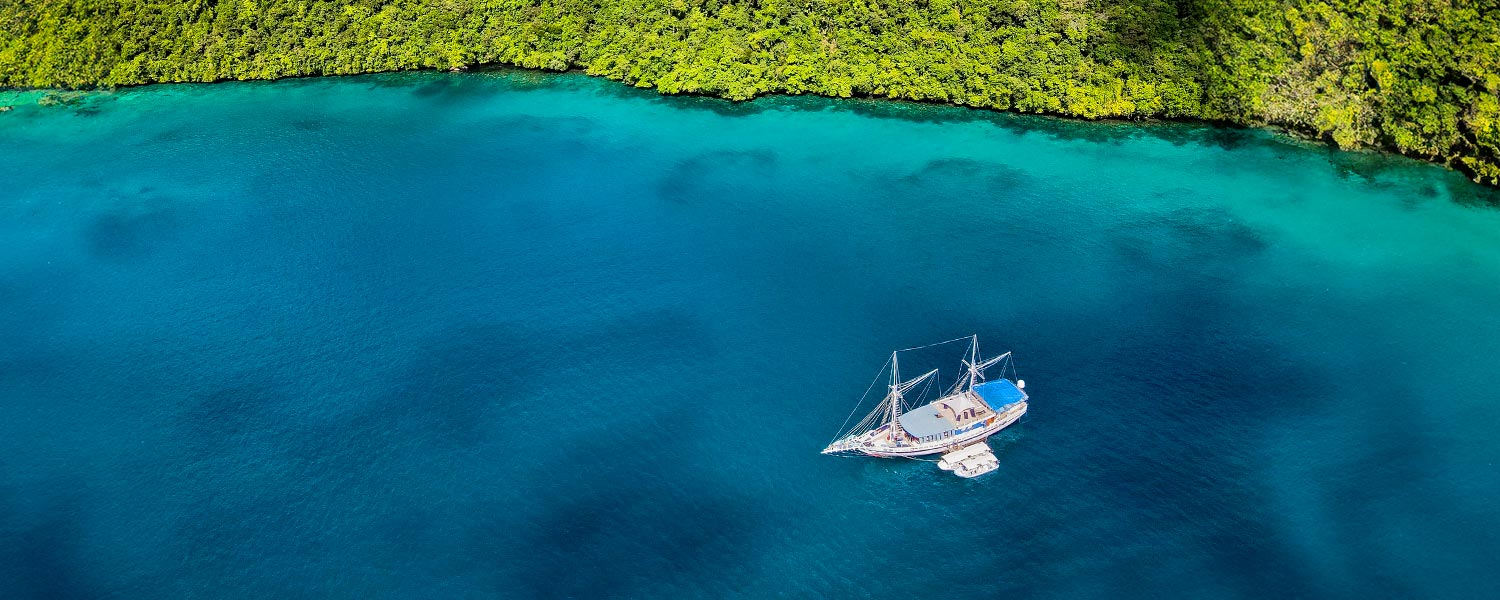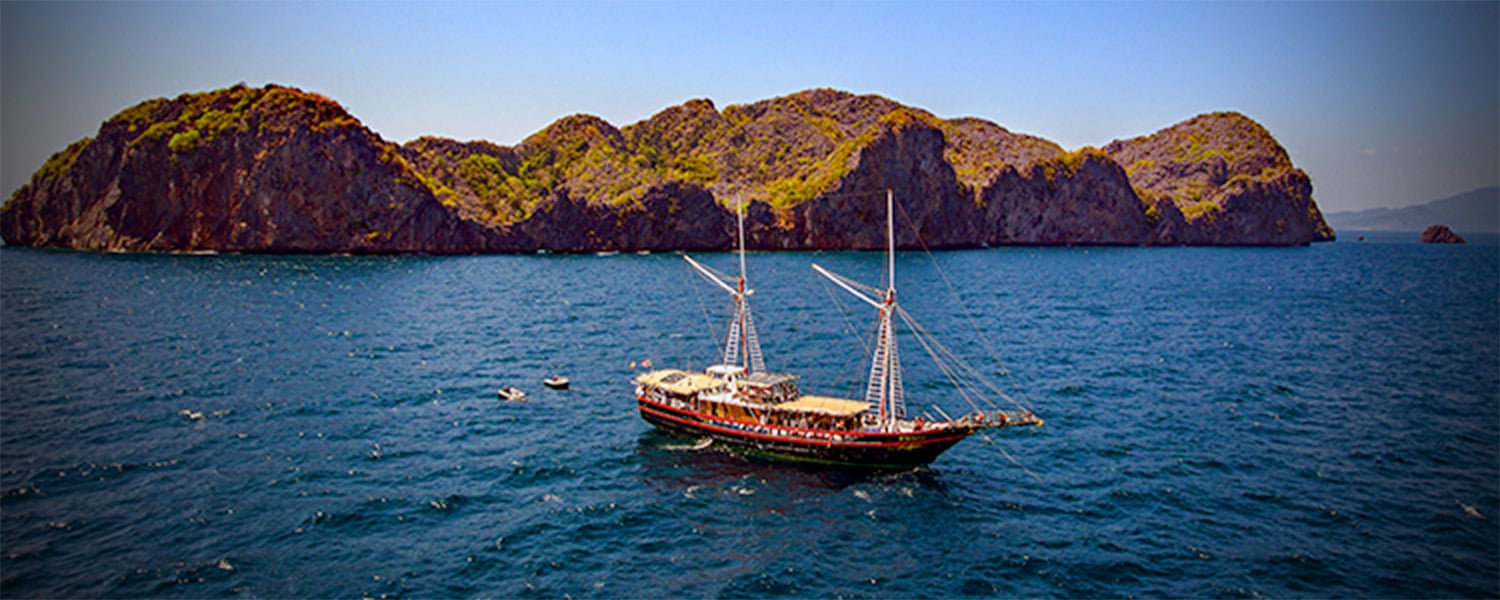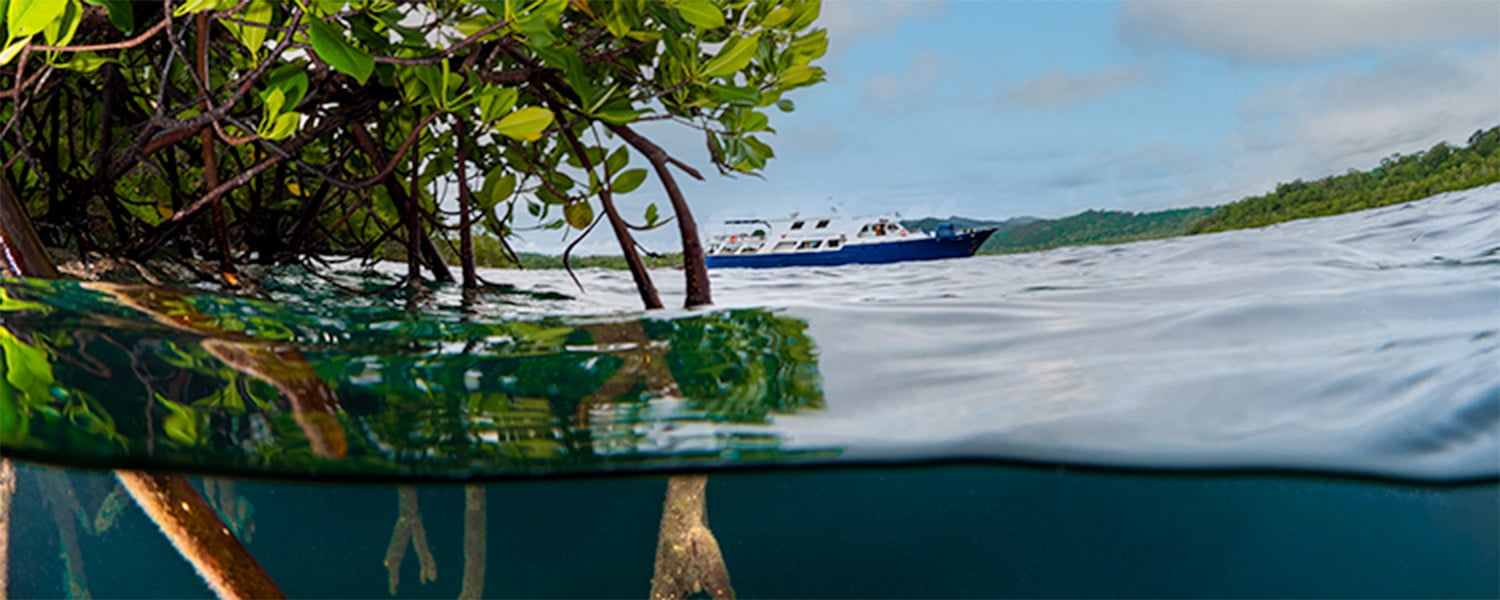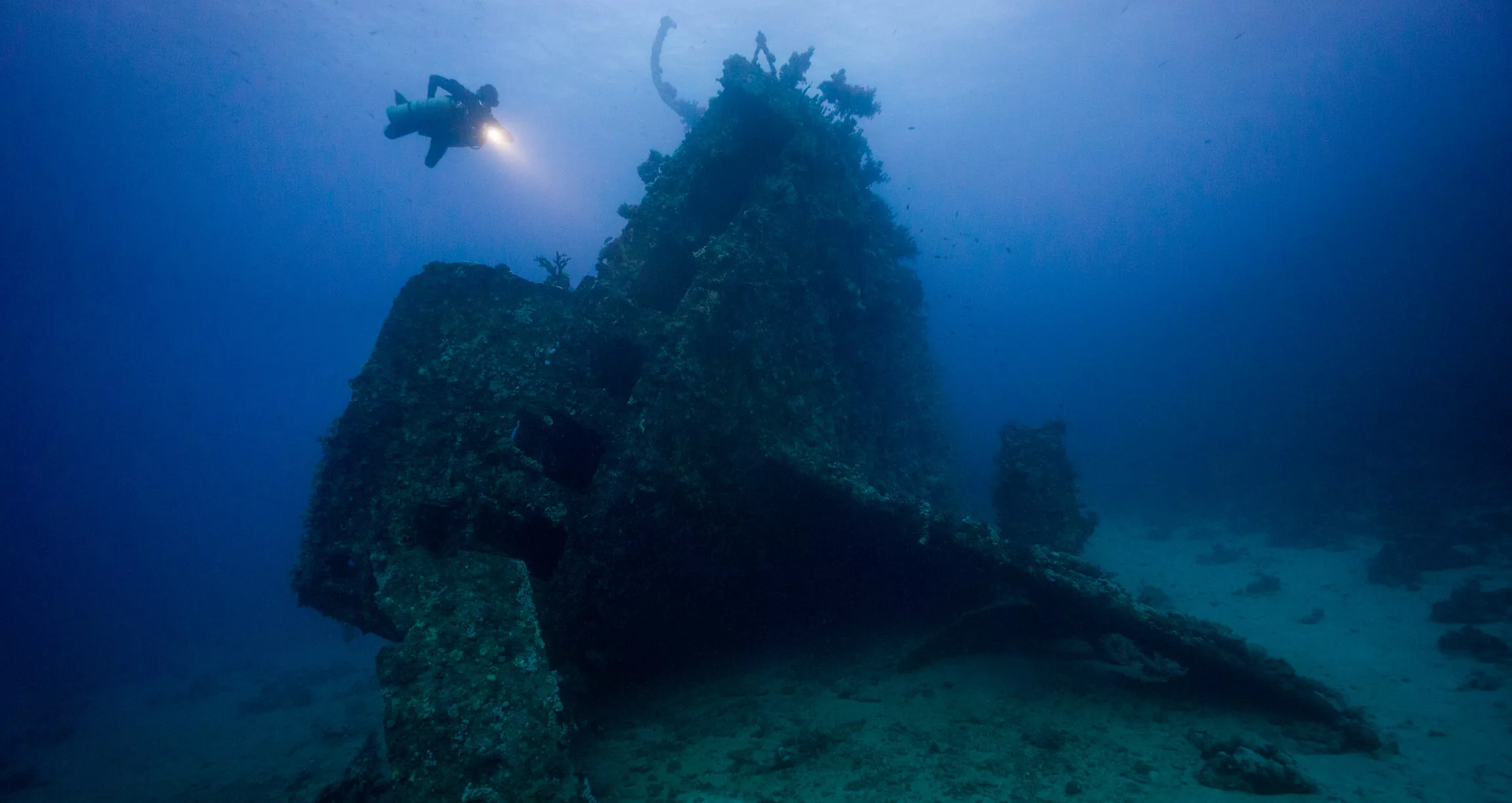When you dive in Malapascua, you will get the chance to see the shy thresher shark. Sightings are almost on a daily basis which is extraordinary for this less-known and sheepish shark. There is no way you will not recognise it. This shark stands out!
What a tail!
The tail is what makes this particular shark unique. Their exceptionally long, thresher-like caudal fins can sometimes be as long as their body length. And that is 6m! There is no mistaking when you see a thresher shark!
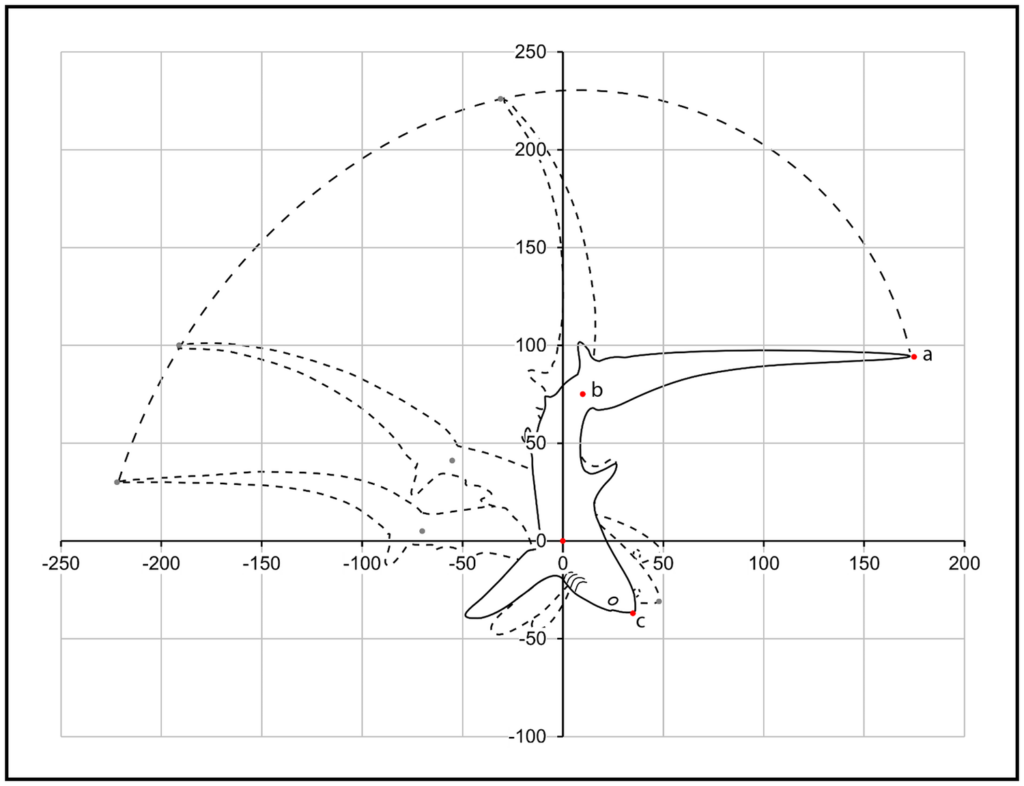
That tail may seems silly but is the weapon of this predator. They use it as a whip to stun prey,
While its caudal fins might be impressive, this shy shark also has other stand-out traits. It has a short head and a cone-shaped nose and its mouth and eyes are generally quite small. They are fairly slender with small dorsal fins and recurved pectoral fins. Their colours vary from brownish, bluish or purplish gray with lighter underbellies.
How many thresher shark species are there?
We currently have only three thresher shark species. We do know of 13 other species but they are all extinct. The three extant thresher shark species are all in the genus Alopias and are:
- Common Thresher Shark (Alopias Vulpinus). This is the largest species growing up to 6m and weighing up to 500kg
- Bigeye Thresher Shark (Alopias Supercilious). This is the medium-sized thresher shark reaching up to 5m.
- Pelagic Thresher Shark (Alopias Pelagicus). This is the smallest thresher shark growing up to 3m.
You can distinguish the three species by the primary color of the dorsal surface of the body.
- Common threshers are dark green
- Bigeye threshers are brown
- Pelagic threshers are generally blue.
Lighting conditions and water clarity can affect how any one shark appears to us though. But this is a foolproof method for scientists.
Since 1995, there is some controversy that a fourth species may exist. This species is apparently present in the eastern Pacific off Baja California. It was previously misidentified as the bigeye thresher. An allozyme analysis from muscle samples revealed that this may be a different species. But scientist have not documented the aspects of its morphology (yet!).

What’s in a name?
While they are known as thresher sharks in English (from their thresher-like tail), a lot of other languages call them “fox sharks”. And the reason is very simple! These sharks belong to the family Alopiidae. That word comes from the Greek word ἀλώπηξ, alṓpēx, meaning fox.

Charles Bonaparte was the first to coin the term in 1838. He used this new Greek name for this family & genus. His new naming convention was based on Pierre Joseph Bonnaterre “Tableau encyclopédique et méthodique des trois règnes de la nature – Ichtylogie” published in 1788.
Bonnaterre’s work was the first written and scientific record of a thresher shark. Bonnaterre named the shark “marine fox” (“renard marin”) and used the Latin name Squalus Vulpinus (“Shark Fox”). He mentioned a reference for the shark description but we have not been able to find that reference work.
An urban myth says that this shark is cunning and fox-like. Ancients believed that when it took bait, it swallowed the hook until it got to the cord, which it bit off and so escaped.

Either way, this shark has had plenty of other common names over time: grayfish, green thresher, sea fox, slasher, swingle-tail, swivel-tail, thin-tail thresher, thrasher, flying snake, tresher shark, whip-tailed shark, and our favourite the Zorro thresher shark. Thresher shark seems to be the name that has stuck over time.
The shy thresher shark is more than a tail
Thresher sharks are also amazing creatures for lesser-known reasons.
- Thresher sharks are solitary creatures that keep to themselves. But studies have actually found that the thresher populations of the Indian Ocean are separated by depth and space according to sex.
- Some species do occasionally hunt in groups of two or three, contrary to their solitary nature.
- All species are highly migratory.
- Thresher sharks are one of the few shark species known to jump fully out of the water, using their elongated tail to propel them out of the water, making turns like dolphins; this behavior is called breaching.
- Most thresher sharks are born large! A thresher shark pup can be already at birth 40% of its full adult size.
- The first birth of a thresher shark was only recorded in 2013
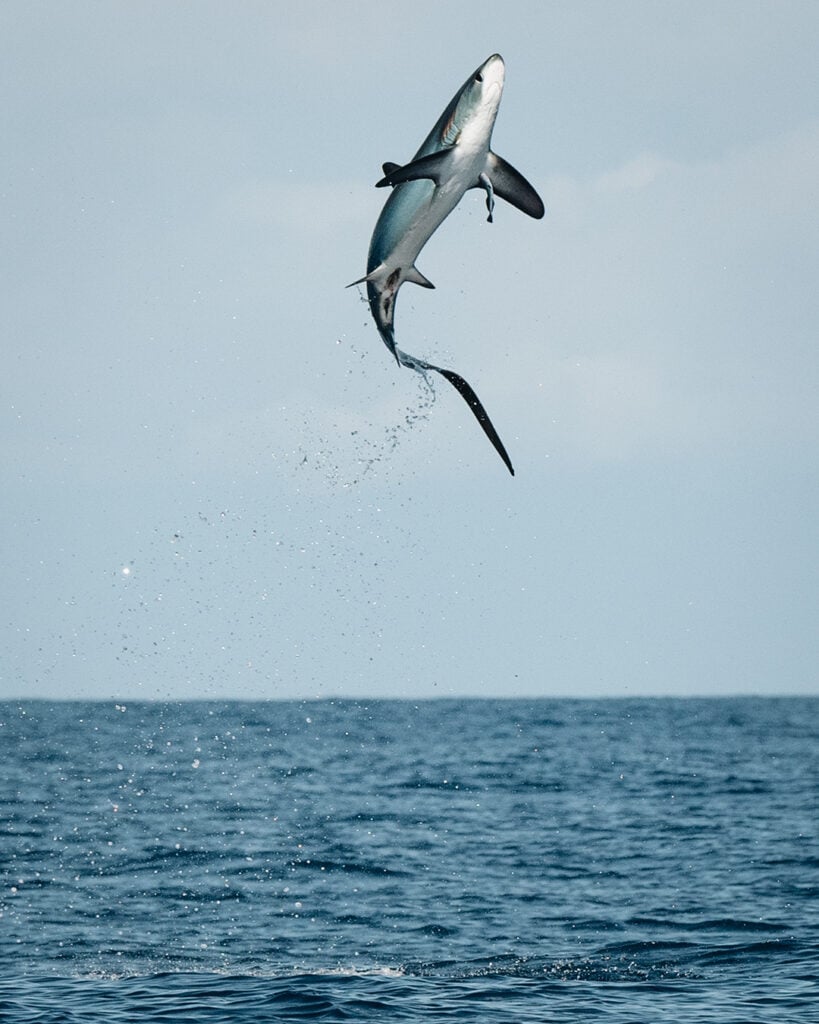
Location, location, location
Thresher sharks are pelagic and prefer the open oceans. You can see them worldwide but they seem to prefer warmer and temperate waters. They do wander into coastal areas too. However there are very, very, very few places in the world divers can see them.
Malapascua and in particular Monad Shoal in the Philippines are considered the TOP destination to see pelagic thresher sharks while scuba diving. Monad Shoal site is a large underwater mount and has several cleaning stations.

Diving the cleaning stations
Cleaner fishes, blue-streaked cleaner wrasse, and moon wrasse all set up shop on a particular spot. Their cleaning business is like a doctor visit and spa treatment for all bigger marine creatures.
Sharks are not immune to parasites and they accumulate them on their skin over time. These parasites can cause chronic disease, developmental problems, and issues with respiration if they attach to the gills. Sharks are also very active so, like any adventurer, they end up with scratches and minor injuries. These can lead to infection.
Specialist cleaner fish eat these parasites, and the dead tissue, providing a useful service to the sharks. It is not a one-way service. The cleaners gain an easy meal. The sharks know that cleaner fishes are important to their health and come to visit these stations on regular basis.
The threshers emerge from the blue and circle over the station. They also lower their tail. This is to signal that they would like to get cleaned. They almost want to show that they will not be eating the cleaners. They then start swimming lower and lower and slower and slower. This is to help the cleaners and ensure they get all the spots!
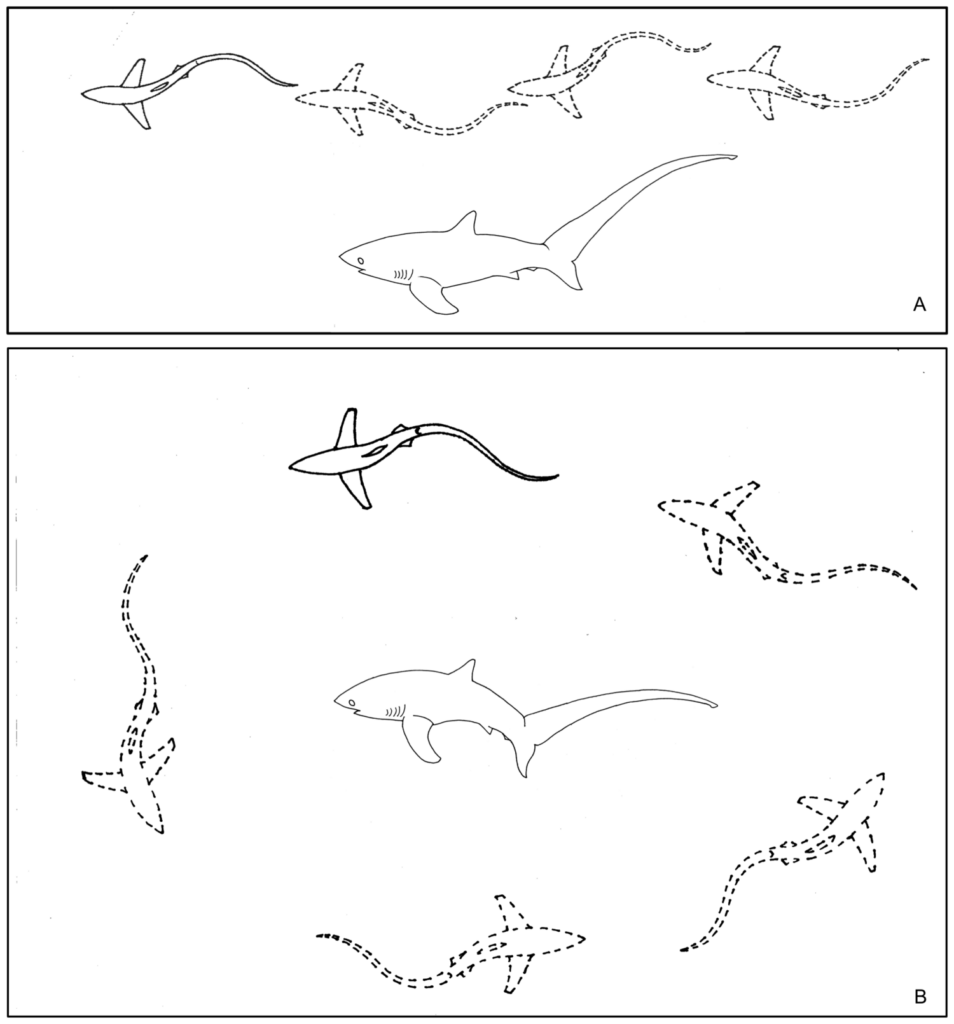
This is really an amazing experience to witness these shy sharks in all their splendour! The cleaning stations are on the edge of the shoal at an average of 25 to 30 m. The dives therefore tend to be a shorter and you need to ensure you are comfortable at these depths. We can sometimes encounter stronger currents, but generally, it is not a difficult dive. It is just an advanced dive due to the depth.
Threats to this timid shark
All three thresher shark species are listed as vulnerable to endangered on the IUCN Red List of Threatened Species. This is due to a various reasons. In order to understand the reasoning, it is better to read it in the words of the experts at IUCN.
All members of genus Alopias, the thresher sharks, are listed as Vulnerable or Endangered globally because of their declining populations. These downward trends are the result of a combination of slow life history characteristics, hence low capacity to recover from moderate levels of exploitation, and high levels of largely unmanaged and unreported mortality in target and bycatch fisheries.
IUCN
It is estimated these shy sharks are declining and their population has already been reduced by 50–79% over the last three generations (55.5 years).
What is extremely shocking is that there has never been a report of a human killed by a thresher shark.
Fortunately, mentalities are changing. The Philippines have embraced, with its heart, this shark species and are doing all they can to protect them. With lots of organisations such as LAMAVE and Save Philippines Seas fighting to protect all marine creatures, we are confident Malapascua and its marvelous sightings will be there for our children to see.
Malapascua is really the best place to see thresher sharks and we visit the island frequently with Philippine Siren. Another hot spot is Alor in Indonesia which we cover during out Alor Archipelago itinerary.
